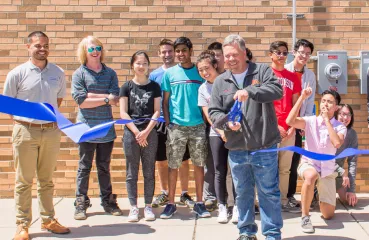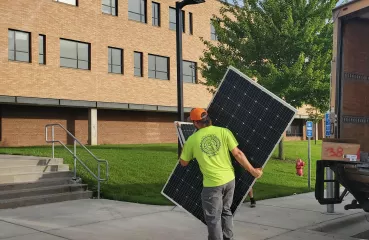Iman Deriche has a vision for a brighter future — one that includes plenty of solar panels like the ones that sparkle atop the school building where she is wrapping up her senior year.
A soon-to-be-graduate of Irondale High School in the Mounds View Public School District, Deriche became interested in renewable energy several years ago after hearing about natural disasters and watching erratic weather kill trees in her own back yard.
“I realized how much climate change has affected everyone around me,” she says. With others from her school’s environmental club, she successfully lobbied her school board to commit to switching completely to clean energy by 2030.
Photo: Iman Deriche, senior at Irondale High School, studies solar energy concepts with Andrea Abeln, environmental science teacher and clean energy advocate.



